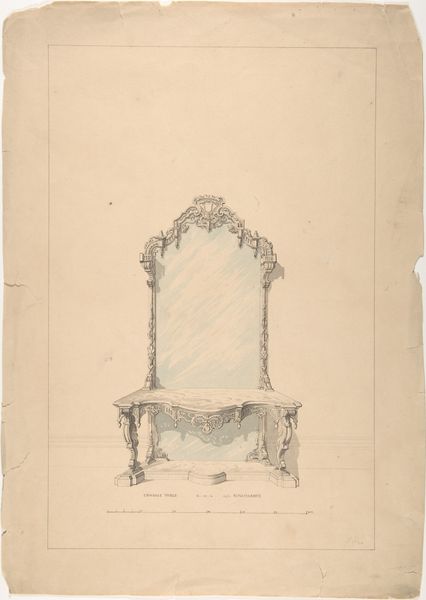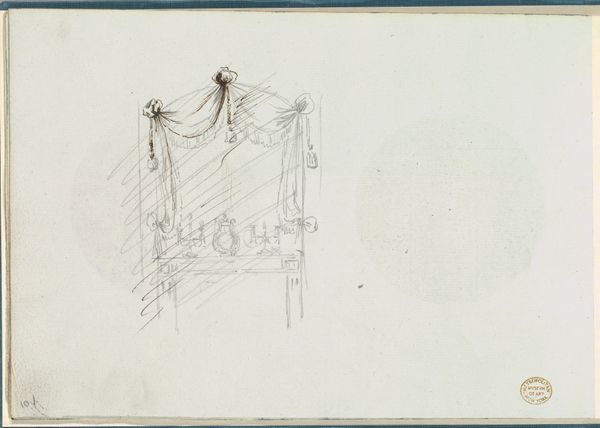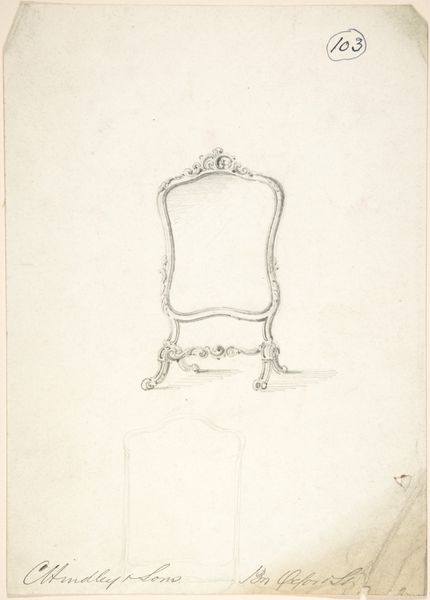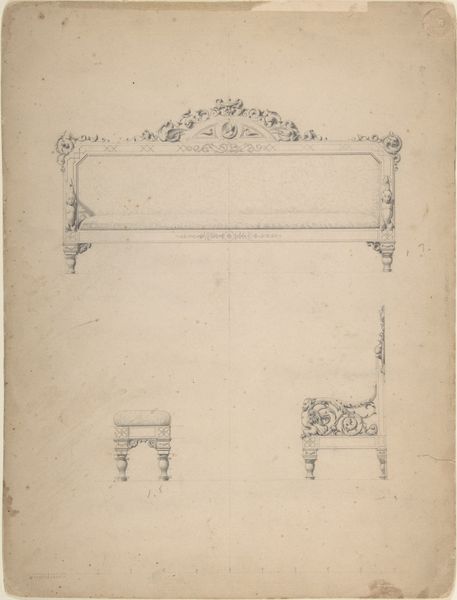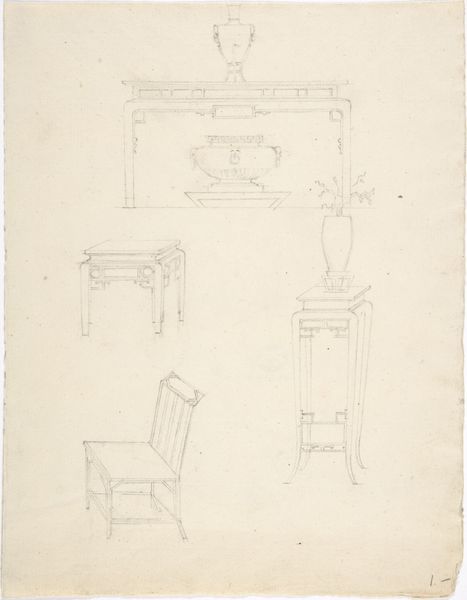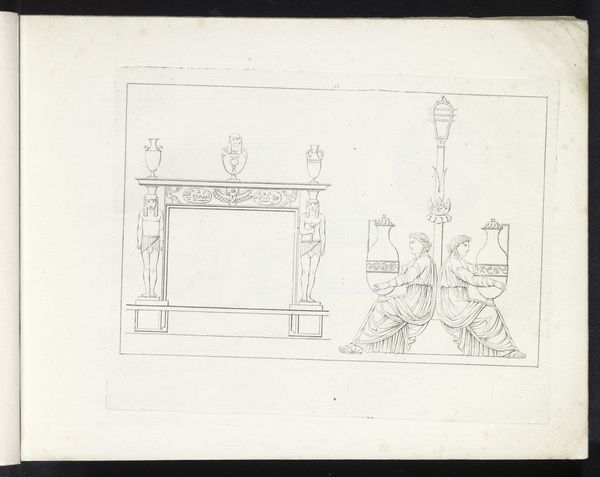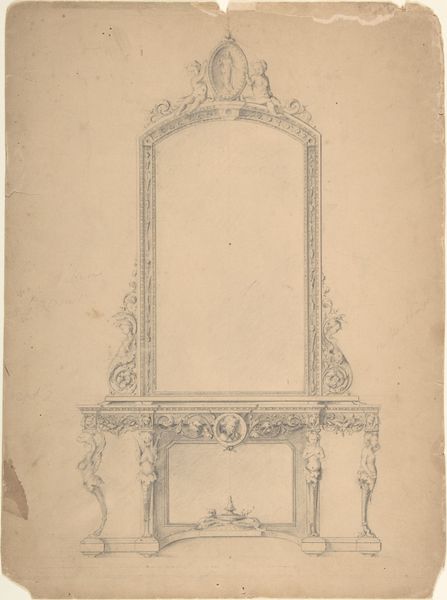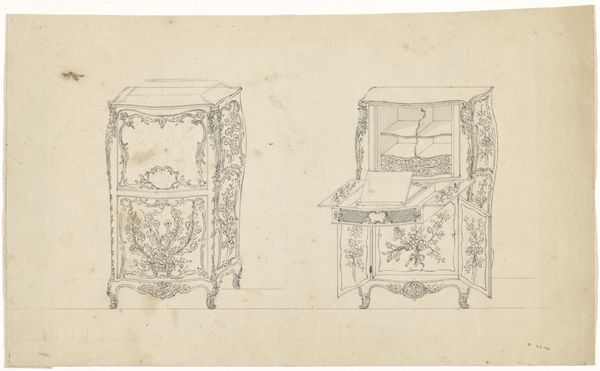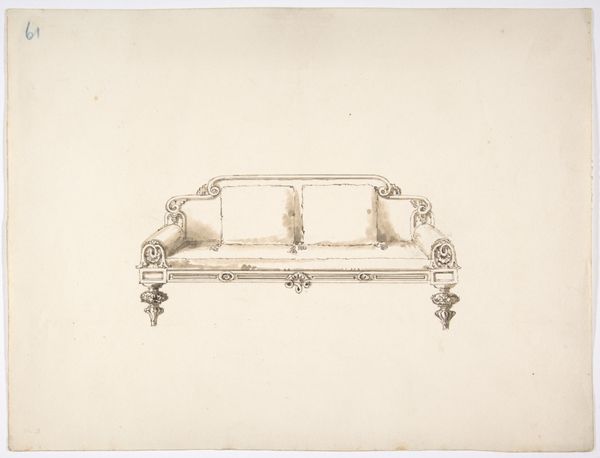
Design for Two Tabletop Mirrors with Military Ornament 1800 - 1850
0:00
0:00
drawing, print, pencil
#
drawing
#
neoclacissism
# print
#
pencil sketch
#
etching
#
pencil
#
history-painting
Dimensions: sheet: 10 13/16 x 14 15/16 in. (27.4 x 37.9 cm)
Copyright: Public Domain
Curator: This intriguing sheet presents us with a design study for two tabletop mirrors adorned with military motifs, dating from around 1800 to 1850. It’s currently held in the collection of the Metropolitan Museum of Art. The artist behind this neoclassical composition remains anonymous. Editor: My initial impression is one of restrained elegance—these mirrors are less about ostentatious display, and more about… symbolic suggestion. The sparseness of the etching lends them an air of sophistication. Curator: Precisely. Consider the deliberate placement of weaponry - swords, helmets, shields. They aren't merely decorative elements, but indicators of power, perhaps even aspirations of a certain class seeking to emulate military prestige through commodity ownership. The etching technique itself speaks to mass production potential. Editor: Yes, I noticed that contrast right away - the delicate, almost frail lines constructing decidedly martial imagery. I wonder, what sort of philosophical argument could one make concerning these ornamental objects in relation to Kantian aesthetics, or perhaps… structuralist concepts regarding mirrored binaries… Curator: An interesting consideration is how the drawing might have served multiple purposes - not only as a design proposal for potential manufacturers but also as a demonstration piece, showcasing the etcher’s skill and ability to translate classical motifs into functional art. The question is, for whom was this drawing really made, and how would its eventual realization further blur high art and everyday use? Editor: I see your point – that these mirrors, though neoclassical in design, subtly begin the breakdown of established material hierarchies and point toward more modern artistic applications… Curator: Exactly. So, while aesthetically refined, it points to broader production networks and even aspirations for upward mobility through accessible, ornamented household items. Editor: Hmm. On reflection, I see the preliminary designs reveal tensions of militarism and refinement of objects, both distinct yet coexisting… A dialectical framework to consider for design innovation within this temporal-cultural niche. Curator: An astute observation! These tabletop mirrors seem simple at first glance, but once examined, offer many insights into material culture during an era marked by war. Editor: Indeed. Thanks for shedding light on the history interwoven in lines and form.
Comments
No comments
Be the first to comment and join the conversation on the ultimate creative platform.

